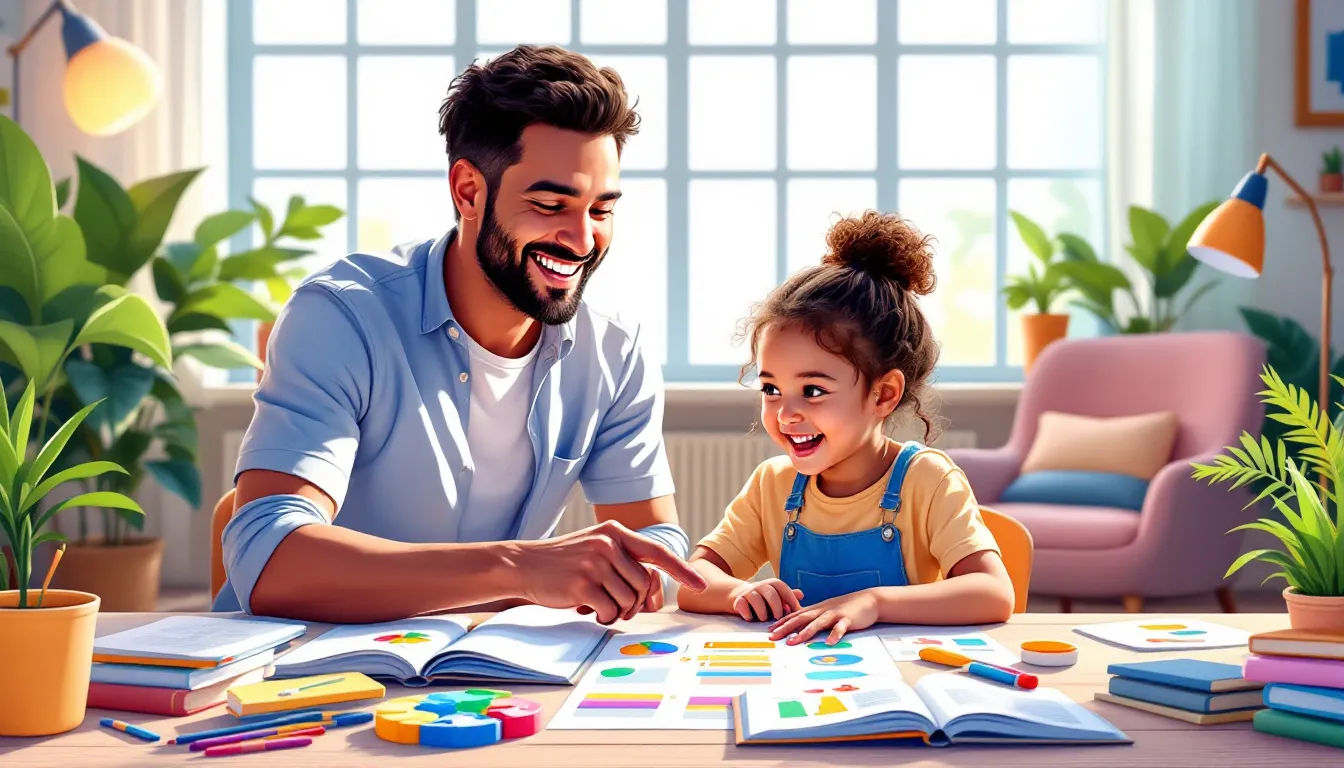Homeschooling can be a great option for children with Sensory Processing Disorder (SPD). It allows parents to create a tailored learning environment that meets their child’s sensory needs while fostering academic growth. Here’s a quick summary of what you’ll learn in this guide:
- What is SPD? A condition affecting how children process sensory input, making traditional classrooms challenging.
- Why homeschooling works: Customizable spaces, flexible schedules, and sensory tools help children thrive.
- How to set up a sensory-friendly homeschool: Use tools like noise-canceling headphones, weighted blankets, and adjustable lighting.
- Daily routines: Incorporate sensory breaks, physical activities, and visual schedules to keep your child engaged.
- Support networks and resources: Connect with local groups, online communities, and occupational therapists for advice and tools.
Homeschooling with SPD requires planning, but with the right strategies, children can succeed both academically and emotionally. Let’s dive into the details!
What is SPD? Sensory Processing Disorder: How to With Sensory Kids
Creating a Sensory-Friendly Homeschool Environment
Setting Up Learning Spaces for Sensory Needs
Designing a homeschool environment that supports sensory needs means creating spaces that reduce overwhelming stimuli and provide tools for self-regulation. Homeschooling allows you to customize these spaces to fit your child’s unique needs.
| Area | Key Features | Purpose |
|---|---|---|
| Seating | Exercise balls, beanbags | Encourages movement while learning |
| Lighting | Adjustable lights, natural light | Eases visual sensitivity |
| Sound Management | Noise-canceling headphones, white noise machine | Manages auditory input |
| Comfort Items | Weighted blankets, fidget toys | Helps with sensory regulation |
Adding a calm-down area is a great way to give kids a space to manage emotions and sensory overload when needed.
Incorporating Sensory Activities into Learning
Sensory activities can be seamlessly added to lessons to help kids stay focused and avoid feeling overwhelmed. For example, using tactile tools like kinetic sand for math or letting kids chew gum during writing tasks can improve engagement and help them absorb information better [3].
"We cannot expect a child to learn when he is overwhelmed with noise, lighting, smells, and textures." - Shawna Wingert, Simple Homeschool [3]
Using Flexible Schedules
Creating a routine that aligns with your child’s sensory needs and energy levels can make a big difference. Here are some ideas for structuring the day:
| Time of Day | Suggested Activities |
|---|---|
| Morning | Core learning tasks (high energy) |
| Mid-Morning | Physical movement or activity breaks |
| Afternoon | Quiet tasks (lower sensory demands) |
| As Needed | Sensory regulation breaks |
Visual schedules, like ones with pictures, can help kids navigate transitions and understand what to expect throughout the day [1].
While setting up a sensory-friendly homeschool environment is important, don’t hesitate to reach out to support networks for additional ideas and resources to make your homeschooling experience even better.
sbb-itb-fb77983
Finding SPD Support Networks and Resources
Connecting with Local Homeschool Support Groups
Community centers, libraries, and occupational therapy clinics often host homeschool groups focused on supporting families dealing with SPD. These groups can be a great way to find advice, share experiences, and connect with others facing similar challenges.
| Resource Type | Where to Find | What It Offers |
|---|---|---|
| Parent Support Groups | Community Centers, Libraries | Local connections, shared resources |
| SPD Workshops | Occupational Therapy Clinics | Practical tips, professional insights |
| Playgroups | Homeschool Organizations | Social interaction, peer connections |
If attending in-person events isn’t an option, there are plenty of online resources that can provide similar benefits.
Using Online Communities and Resources
Online platforms are excellent for connecting with other parents and experts who understand SPD. For example, the Sensory Super System is a digital platform designed to help parents with SPD-specific challenges in homeschooling.
"Managing sensory issues is key to ensuring children succeed in both studies and life." - Annelaure Jackson, Home Educator and Sensory Support Specialist [2]
When choosing online resources, look for:
- Active Communities: Forums where parents regularly share advice.
- Expert Input: Resources reviewed by SPD specialists.
- Relevant Content: Tools and tips that address homeschooling needs.
Homeschool Directory: A Resource Hub

Platforms like Homeschool Directory make it easier to find SPD-friendly tools and support. The directory organizes resources like curriculums, tools, and forums, making it simple to locate materials tailored for homeschooling children with SPD.
Whether through local groups or online communities, these resources provide the connections, advice, and tools parents need to navigate homeschooling with SPD more effectively.
Tools and Techniques for SPD Homeschooling
Sensory Tools for Homeschooling
Homeschooling offers the flexibility to incorporate sensory tools directly into the learning experience. For children with SPD, tools designed to address specific sensory needs can make a big difference. Items like therapy balls for movement, sensory bins for tactile engagement, and noise-canceling headphones to minimize distractions are great options. Visual aids, such as timers, can also help establish predictable routines.
To keep kids focused and calm, match sensory tools with particular activities. For instance, use therapy balls during reading sessions or tactile materials for math exercises. This creates a structured and supportive learning environment.
Recommended Books and Guides
Books such as The Out-of-Sync Child and The Sensory Processing Disorder Answer Book provide actionable tips for setting up effective learning spaces, managing sensory overload, and adjusting teaching methods to meet your child’s needs.
Keep a sensory journal to track which tools and methods work best. This helps you spot trends and fine-tune your approach over time. Partnering with an occupational therapist can also provide additional insights to enhance your strategies.
Conclusion: Succeeding with SPD in Homeschooling
Main Points to Keep in Mind
Teaching children with SPD at home takes careful planning, a sensory-friendly setup, and routines that can adjust as needed. Including regular sensory breaks and activities helps keep kids focused and engaged during the day. Striking a balance between structure and flexibility is key, ensuring that sensory activities are tailored to your child's specific needs. This approach creates a space where children with SPD can grow both academically and emotionally.
Support for Homeschooling Parents
Homeschooling a child with SPD is a process that demands patience and ongoing adjustments. Using sensory tools and adaptable routines can make a big difference in both learning outcomes and emotional health.
Here are some ways to track progress:
| Indicator | Signs of Progress |
|---|---|
| Sensory Regulation | Better ability to manage sensory inputs during lessons |
| Learning Engagement | More active participation in activities and assignments |
| Emotional Well-being | Lower stress levels during learning sessions |
| Academic Progress | Steady completion of adjusted learning tasks |
Connecting with other homeschooling parents through local groups or online forums can be incredibly helpful. These communities offer both emotional support and practical tips from those who’ve been in your shoes. It’s also worth consulting an occupational therapist who can provide expert advice and refine your strategies to better suit your child's needs.
Your commitment to creating a nurturing learning environment plays a huge role in your child's growth. Celebrate the small wins along the way, and remember that every step forward builds toward your child’s overall success. By combining the right tools, environment, and support network, homeschooling can be a rewarding and effective option for children with SPD.


